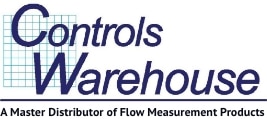Paint, Latex, Molasses
A controlled magnetic field is applied to the metering tube by way of externally mounted coils. The conductive fluid flowing through the magnetic field generates a voltage at the sense electrodes that is proportional to the velocity of the fluid. Grounding electrodes detect any ambient noise that may be present. Dual signal processing of the signals from the sense and ground electrodes result in noise cancellation resulting in higher accuracy across a greater flow range. The processed signal is then converted to volumetric flow.
We currently offer Magnetic Flowmeters, commonly known as magmeters, from Niagara, SeaMetrics and ABB Automation. Magmeters are used to measure the flow of conductive fluids. The ‘open-pipe’ design of the magmeter makes it a perfect match for wastewater, slurries, or any other fluid with solids content. Another inherent benefit of the ‘open-pipe’ design is low pressure drop. The only wetted parts are the tube liner and the electrodes, both of which are available in many different materials. The accuracy of a magmeter is typically +/- 0.2 to 0.5% of rate. Typical features of a magmeter include: Empty pipe alarms, forward/reverse flow, pulse/analog outputs, serial communications, remote displays, and SMART/HART protocols.
